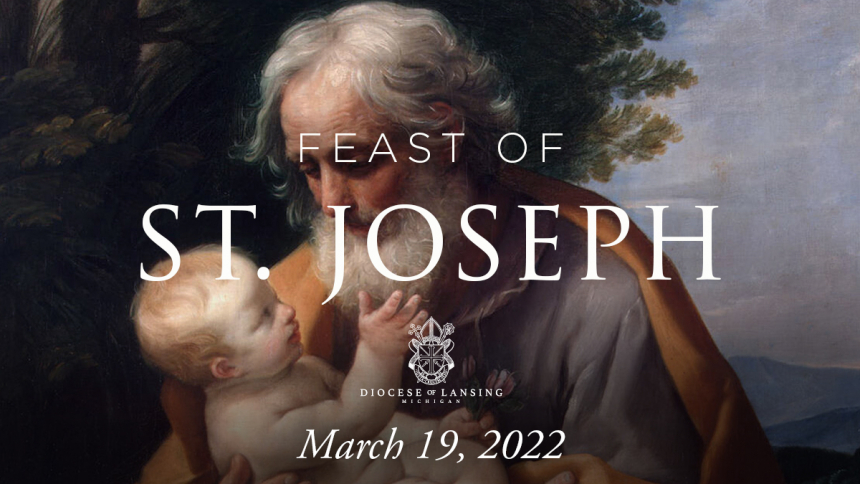
Today, Saturday, March 19, is the Solemnity of Saint Joseph, Husband of the Blessed Virgin Mary. Happy Feast Day! Among his many titles, Saint Joseph is the Protector of the Holy Family and Patron of the Universal Church. In this article, Rich Budd explains why we should also entrust ourselves, our families and our dearest intentions to the protection of Saint Joseph. Rich writes:
There are so many things to reflect on when it comes to St. Joseph, his humility, his attentiveness to Lord’s voice as attested to in the Gospels, or the fact that God chose him to be the caretaker of his only begotten Son.
Today, I’d like to focus in on a typical element of artistic depictions of St. Joseph. Have you ever noticed that often in paintings or statues of St. Joseph he is holding a staff with lilies growing out of it? Where does that come from?
It turns out that this tradition of St. Joseph’s staff comes from two sources, a biblical text and a non-biblical text. The biblical text is from Numbers chapter 17 when representatives from each of the 12 tribes of Israel put forth their staffs to be left in the temple to see who would be chosen by God to have exclusive right to the priesthood and authority in that role. Aaron’s rod blooms with flowers and ripe almonds and represents God’s choice for this role.
The non-biblical text, the Protoevangelium of James is very ancient, likely written in the early to middle second century, around one hundred years after Christ’s death and resurrection. While the text was rejected from the canonical books of the Bible, it is the source for many “small t” traditions around the childhood of Mary and Jesus’ birth. The Protoevangelium of James is the source for things like the names of Mary’s mother and father: Anna and Joachim, that Mary was consecrated at the Temple as a young girl, that she was a young teenager at the Annunciation, the tradition that Joseph was a widower when he was betrothed to Mary, and that he had other children from his previous marriage. It is also likely one of the very first sources of Marian devotion and the defense of Mary’s perpetual virginity. Many ancient Churches, like the Hagia Sophia have art inspired by the document. So, while it is not scripture, and should not be considered at the level of scripture, it is nevertheless an interesting document for Christians.
The text describes how Mary was consecrated to the service of the Temple as a small child, similarly to how Hannah dedicates Samuel to the service of the Temple when he was a young child. However, as Mary reaches the age of puberty, the priests of the Temple determine that it would be unfitting for her to remain there, and they look for a caretaker husband for Mary. According to the text, local widowers were asked to submit their walking staffs which were then placed in the Temple. When the staffs were retrieved, a dove came out of Joseph’s staff and landed on him, indicating that he was the Lord’s choice to be Mary’s husband. Joseph then took Mary into his care and the story continues from there with many of the familiar details of the birth of Christ.
So next time you see an image of St. Joseph holding a staff which is flowering like the staff of Aaron before him, remember that, whether or not the Protoevangelium of James contains an accurate depiction of those events, Joseph was God’s chosen man to be the husband and protector of Mary and the Father and caretaker of His son Jesus. You can entrust your life and concerns to his paternal care and intercession! Saint Joseph, pray for us!
* Rich Budd is Director of Marriage & Family Life for the Diocese of Lansing.
